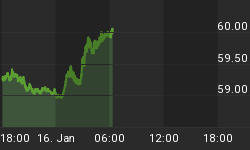Oil prices have recently dropped on concerns relating to both growth and supply. Falling back on first principles, can we make any predictions about prices over the medium term? Obviously, it is the cost of the marginal barrel of oil that sets prices at any given level of demand. According to recent analysis by Bernstein and the Wall Street Journal, in 2011 the production cost of the incremental barrel of production was "$92.26 for the 50 largest listed oil and gas companies and will reach $100 a barrel" in 2012.

Unsurprisingly, the WSJ stated that incremental barrel costs are "rising because much of the extra oil added to world supply has come from more technically challenging areas such as deep water or the Arctic" which results in "a combination of higher material costs and reduced productivity per well."
Viewed another way, how much would demand have to fall to create sustained $80 prices? Looking at the chart produced by Cambridge Energy Research Associates ("CERA") below, it is on the order of 10 million bopd or around 10% of daily demand i.e. if demand were to fall to around 80 million bopd the last 10 million bopd on the right side of the chart would be unprofitable production and would eventually be shut-in.

Alberta's Forgotten Debt Default - Prosperity Certificates with Negative Nominal Interest Rates to Boot!
From 1936 to 1945, Alberta was in default on its provincial debt, managing only partial coupon payments and no principal repayments. Out of cash and out of options, Alberta did what every bankrupt EU country wishes it could do again - Alberta started printing its own currency. Of course Alberta didn't call it that, this fiat currency came with the nifty moniker of Alberta Prosperity Certificates ("APCs"):

Name notwithstanding, fiat currency was effectively what it was. The APCs were introduced in August 1936 and were used to pay government bills. Most interesting, under the plan, the recipient of the APC was required to purchase a stamp equal to 1% of the face value each week. The stamps had to be placed on the back of the APCs for them to be valid. For bearers of the APC, the result was that they experienced a 50% loss of purchasing power during the course of a year if they failed to spend them. Voila, negative nominal interest rates! Talk about increasing the fabled "velocity of money". Surely a scheme like this is the consummation of the secret dreams of every consumption obsessed, Keynesian central banker on the planet. Let's not tell them shall we?
Some Links to Other Articles You Might Find Interesting:
Austrian True Money Supply - According to the True Money Supply ("TMS") measure as defined by the Austrian School of Economics, US money supply has grown at a rate of over 12% in the last year...
Discounts Hiding in Plain Sight - Natural Gas - "A few weeks ago I wrote about the investment prospects of two asset classes in the energy space. One is a less-focused on part of the Canadian oil sector - conventional heavy oil in the Lloydminster area - and the other is the much beaten down North American natural gas sector..."
Canadian Farm Receipts Increase, Farm Consolidation Trend Continues - The 2011 Census of Agriculture revealed higher Canadian farm revenues and an increase in farm size reflecting a continuation of the land consolidation trend in the industry...
Oil Price Per Barrel For Biofuel Break-Even - From Goldman Sachs research into biofuel efficiency - the following table outlines the cost per barrel equivalent of a range of biofuels - or in other words the prevailing oil price at which they are competitive substitutes...
Some Quotable Quotes - Ben Bernanke - "The always entertaining if not particularly prescient Ben Bernanke, Chairman of the Federal Reserve: "We've never had a decline in house prices on a nationwide basis. So, what I think what is more likely is that house prices will slow, maybe stabilize, might slow consumption spending a bit..."
How Green are Biofuels? - Some interesting questions arise from the increasing use of food commodities as an input into an industrial process to create energy - are biofuels as "green" as suggested and are they competitive against conventional petrochemical energy sources?...
BIS - Unsustainable Public Sector Fiscal Path - Some interesting quotes from a recent study by the Bank of International Settlements ("BIS")...
















